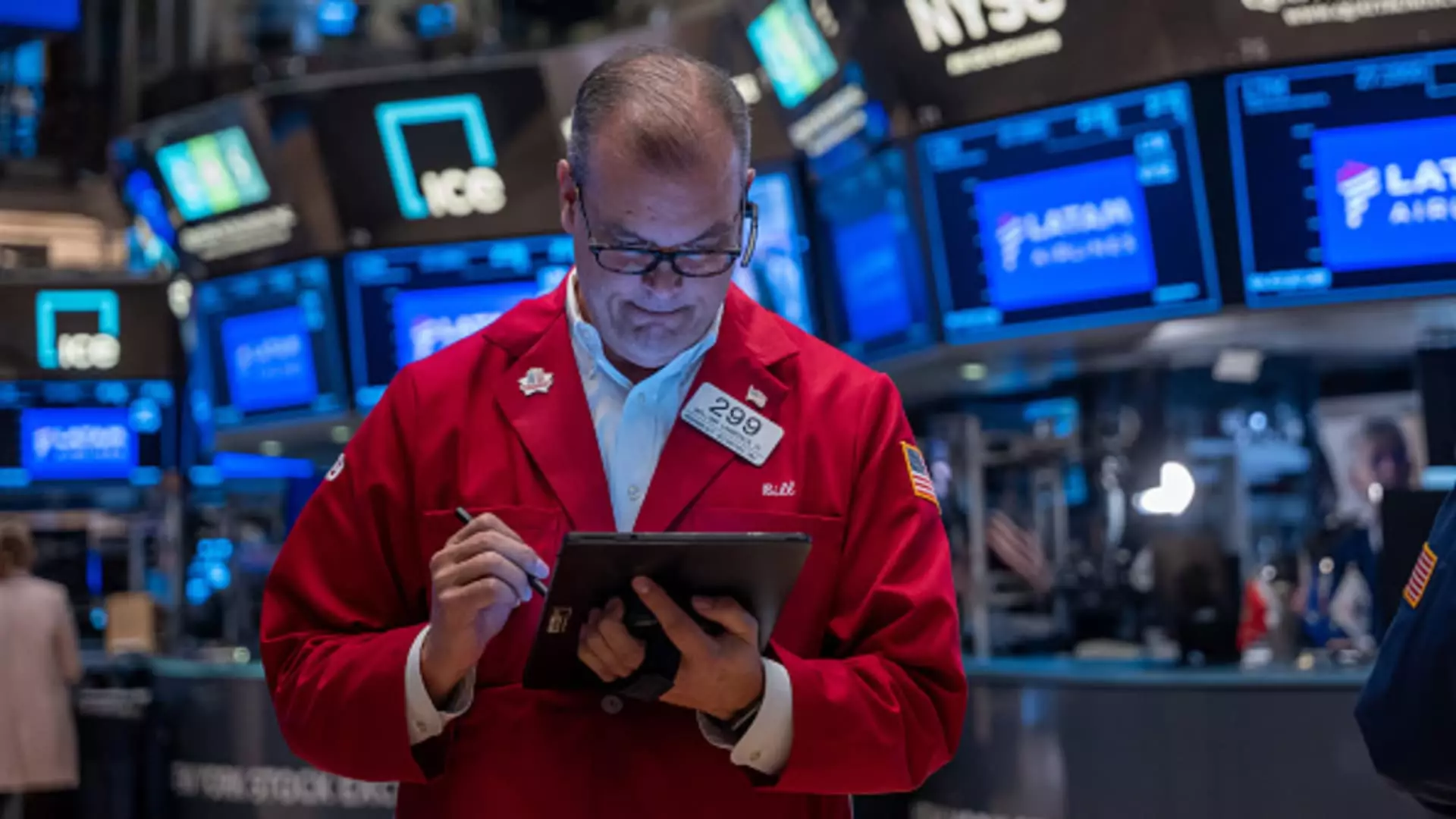Every evening, investors and analysts alike gather insights from daily market movements to prepare for the following day. One major component of this analysis is the daily newsletter, Stocks @ Night, which provides an insightful look back at the day’s trading while also acting as a primer for the next session. On the backdrop of such resources, it has become apparent that the recent dip in stock indices, particularly the Dow Jones and S&P 500, has become a topic of critical interest. These movements are not only indicative of immediate market sentiment but also provide vital clues to future shifts in investor strategies.
The recent surge in the benchmark 10-year Treasury yield, crossing above 4.2%, has drawn significant attention, becoming the most searched ticker symbol on financial news platforms. This spike raises questions among investors regarding its causes and potential consequences. Alongside it, the two-year Treasury yield is hovering around 4.03%, while other short-term Treasury yields also reflect healthy returns, with the six-month T-bill now yielding 4.49%.
These rising yields signal a tightening effect on borrowing costs, which can constrain corporate growth and consumer spending. A closer examination reveals that as yields increase, traditional investments in bonds may become more attractive than equities, leading to capital shifts. For investors, keeping an eye on these yield movements can offer strategic directions on asset allocation.
Starbucks is currently at the center of scrutiny, having experienced a notable 4% drop in extended trading following the announcement of its decision to suspend fiscal guidance for 2025. This move, coupled with declining same-store sales, has been alarming for shareholders. Nonetheless, the company has raised its dividend from 57 cents to 61 cents per share, a strategic move aimed at retaining investor confidence despite the stagnation in sales.
The forthcoming details that are expected next week will be crucial for investors who rely on consistency in earnings and growth forecasts. A lack of transparency and clarity regarding the future performance of Starbucks may translate into a more cautious approach from investors, potentially leading to increased volatility in their share price.
On another front, McDonald’s is dealing with troubling news as the CDC reported a connection to an outbreak of E. coli affecting 49 cases across various states. After this revelation, the fast-food chain experienced a notable decline of approximately 6% in after-hours trading. The company’s proactive stopping of the use of fresh slivered onions and quarter-pound beef patties is a direct response to market pressures, reflecting how food safety concerns can swiftly alter trading dynamics.
The historical context draws comparisons with Chipotle, which faced a similar E. coli crisis that affected its stock price for several years. Stakeholders will watch the fast food giant’s recovery closely, as reputation management becomes a pivotal element in their operational strategy. The next few quarters will reveal whether McDonald’s can effectively navigate these challenges without suffering long-term financial repercussions.
As the earnings calendar unfolds, many companies are in the spotlight, with several set to report shortly. Coca-Cola stands out since its stock has risen 7% in the previous three months, with anticipation building around its quarterly report. Investors will be keenly interested in any insights regarding consumer trends and spending habits that may affect future sales.
In contrast, Boeing has shown resilience with a 5% uptick this week, despite ongoing labor negotiations that could impact operational output. Moreover, tech firms, including IBM and ServiceNow, have displayed notable gains in the last three months, signaling a recovery in the tech sector that investors might capitalize on.
With various sectors facing unique challenges and opportunities, market vigilance is paramount. As economic indicators, corporate responses to market conditions, and external factors converge, investors must remain flexible and informed. The fluctuations in stock prices, combined with the latest insights from earnings reports, yield signs that should influence investment strategies going forward.
By analyzing the developments surrounding companies like Starbucks and McDonald’s, alongside observing shifts in treasury yields, investors can leverage informed decisions during this volatile period. As the markets continue to evolve, understanding these dynamics will be key in navigating both immediate and long-term investment opportunities.

